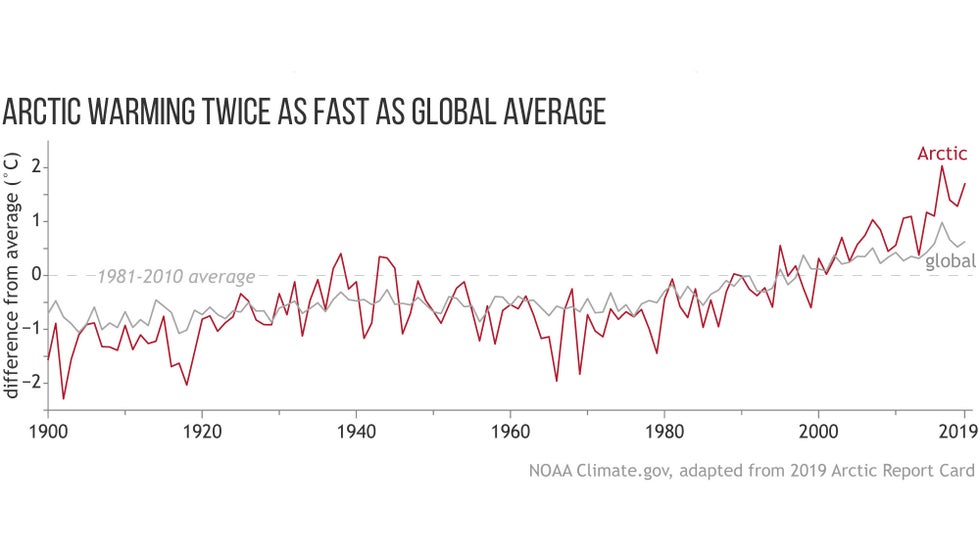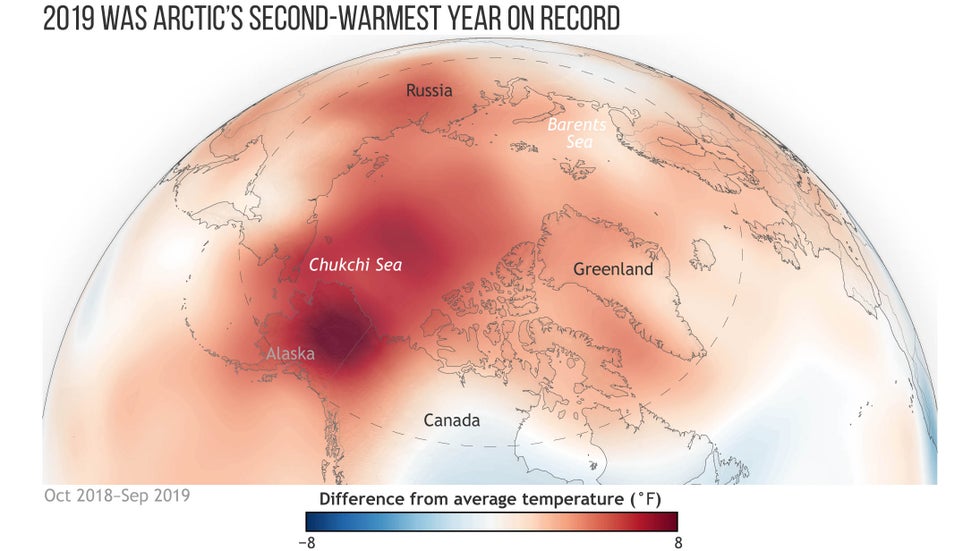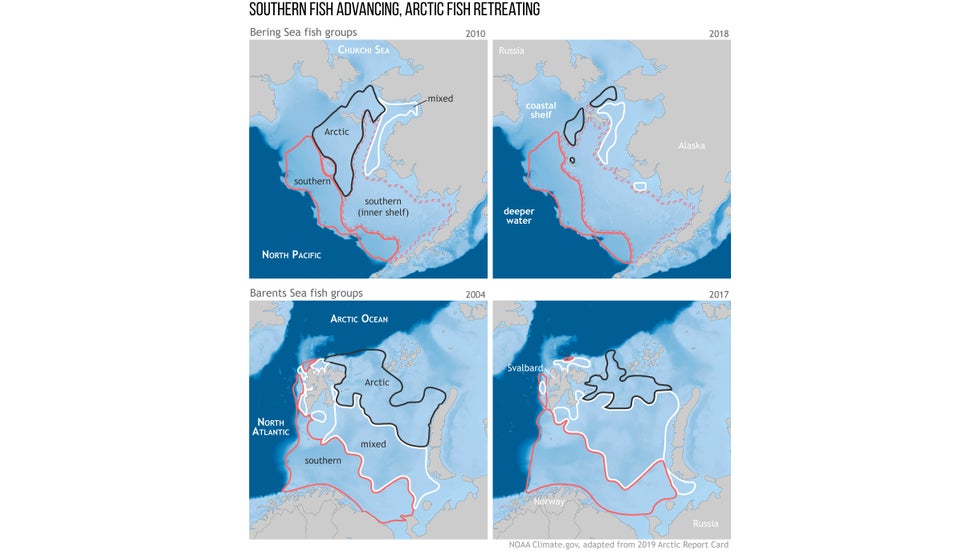The Arctic region took a beating in 2019, with near-record-warm air and ocean temperatures resulting in widespread melting of the Greenland ice sheet, low sea-ice extents and shifts in the distribution of commercially valuable marine species, according to NOAA’s 14th-annual Arctic Report Card released Tuesday at the American Geophysical Union’s fall meeting in San Francisco.
The report also found that as the Arctic warms, permafrost regions might already be a net source of carbon dioxide to the atmosphere, a feedback that could exacerbate overall global warming.

"The speed and trajectory of the changes sweeping the Arctic, many occurring faster than anticipated, makes NOAA’s continued investment in Arctic research and activities all the more important," Dr. Timothy Gallaudet, retired Navy Rear Admiral and deputy undersecretary of commerce for oceans and atmosphere at NOAA, said at the news conference where the report card was released Tuesday.
The Arctic Report Card is organized into three sections: "Vital Signs," "Other Indicators" and "Frostbites."
Vital Signs provides yearly updates on seven topics: surface air temperature; terrestrial snow cover; the Greenland Ice Sheet; sea ice; sea-surface temperature; Arctic Ocean primary productivity; and tundra greenness. Other Indicators covers topics that are updated periodically, such as permafrost and the global carbon cycle. Frostbites focuses on new and emerging issues, as well as topics that relate to long-term scientific observations in the Arctic.
"The Arctic Report Card is an annual volume of original, peer-reviewed environmental observations and analysis of a region undergoing rapid and dramatic change," NOAA said in a press release. "Compiled by 81 scientists from 12 nations, the 2019 report card tracks a number of environmental indicators to inform decisions by local, state and federal leaders, as Arctic residents confront the challenges and opportunities presented by a rapidly changing climate and ecosystem."
Some of the major findings from the 2019 Arctic Report Card include:
-The average surface air temperature over land in the Arctic between October 2018 and August 2019 was the second-warmest since record-keeping began in 1900.

-Remarkably early snowmelt was observed in March over the northwestern Canadian Arctic and Alaska, during a month when maximum snow depth is typically reached.
-North American Arctic snow cover in May was the fifth-lowest for that month in the 53-year period of record. Then, June measured the third-lowest snow cover.
-The extent and magnitude of Greenland Ice Sheet ice loss from fall 2018 through 2019 challenged the previous record year for ice loss, 2012.

-Arctic sea-ice extent at the end of summer 2019 was the second-lowest since 1979, when satellite observations began tracking it. The maximum ice cover toward the end of winter 2019 was the seventh-lowest on record.
-Bering Sea winter sea ice extent in 2019 narrowly missed surpassing the record low set in 2018.
-Reduction in sea ice and changes in bottom-water temperature caused Arctic fish species to shift to more northern waters between 2010 and 2018. Commercially valuable southern species are expanding their range northward to take advantage of changing conditions.

The report card also highlighted new research on permafrost – areas where the soil remains permanently frozen just below the surface – and other Arctic ecosystems. A three-year study using NASA aircraft recently found that tundra and forest-covered parts of Alaska are already a net producer of carbon dioxide, the most prevalent greenhouse gas, during the warm season (April through November).
Few studies have been able to sample the Arctic during the long, cold winter, but a comprehensive study published this autumn in the journal Nature Climate Change indicated that more carbon was being released from the Arctic permafrost during the colder months than was being taken up during the growing season.
Together, the new studies indicate that the Arctic could be adding a net 600 million metric tons of carbon to the atmosphere per year, an amount equal to more than 5% of the carbon added from fossil fuels.
The report card did not analyze methane, another greenhouse gas locked in Arctic soils that could cause rapid warming if large amounts are suddenly released.
NOAA said the Arctic Report Card is one of the many ways it is advancing its mission in the Arctic by improving weather, ocean and sea-ice forecasts, enabling sustainable fisheries and economic activity and supporting national and homeland security.
The Weather Company’s primary journalistic mission is to report on breaking weather news, the environment and the importance of science to our lives. This story does not necessarily represent the position of our parent company, IBM.
The Weather Company’s primary journalistic mission is to report on breaking weather news, the environment and the importance of science to our lives. This story does not necessarily represent the position of our parent company, IBM.

No comments:
Post a Comment